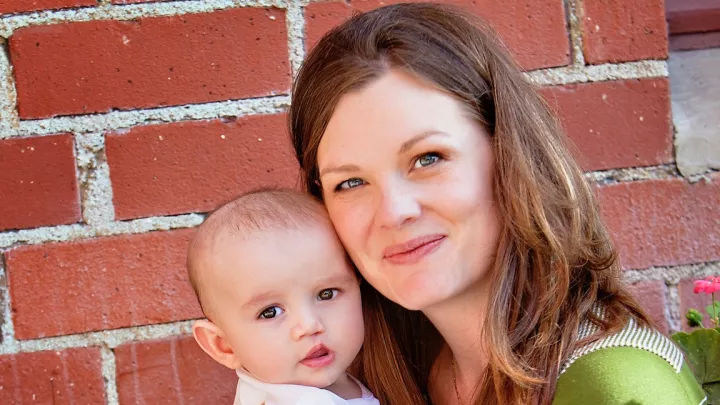Plastic and Maxillofacial Surgery Research
Research
Physician-researchers in the Division of Plastic and Maxillofacial Surgery are actively engaged in research on cleft lip and palate, craniosynostosis, vascular anomalies and birthmarks, jaw surgery, craniomaxillofacial trauma, facial paralysis and ear reconstruction. Their goal is to identify the underlying causes of these conditions, and to develop and improve surgical treatment options and outcomes for children. The results of their research are routinely published in notable medical journals.
- Mark M. Urata, MD, DDS, chief of the Division, is also the principal investigator of the International Craniofacial Children’s Fund.
- This $5 million independently-funded project enables children from medically-underserved countries with severe craniofacial abnormalities to benefit from care they may otherwise be unable to receive.
- Research topics currently being studied by our surgeons, include molecular mechanisms and technologies, three-dimensional facial imaging, and facial patterns related to autism.
Molecular Mechanisms and Technologies
Dr. Urata has funding from the National Institutes of Health (NIH) to study the molecular mechanisms of cleft palate. This research is conducted in collaboration with Yang Chai, DDS, PhD, at the Center for Craniofacial Molecular Biology of the USC School of Dentistry. It centers around defining the molecular chain reaction that must occur for a cleft palate to develop.
Another area of investigation is emerging molecular technologies for stimulating bone growth to repair the alveolar cleft defect, primarily using recombinant human bone morphogenetic protein-2 (rhBMP-2). For decades, traditional alveolar cleft repair surgery involved the painful harvesting of bone graft from a patient’s hip. Over the past several years, we have offered patients an alternative procedure using rhBMP-2, a potent bone-generating substance, eliminating the need for bone harvesting and its associated pain and potential complications.
- We have also advanced the rhBMP-2 procedure by adding a demineralized bone matrix scaffold (BMP/DBM) to further augment and direct the alveolar bone growth. In order for this treatment to be a viable alternative to bone graft, BMP/DBM must demonstrate both safety and bone generation that is at least equivalent to bone graft. Recently, two studies were conducted by our team on alveolar cleft repair, each using a different evaluation method to compare traditional surgery with BMP/DBM.
The first study compared the dental X-rays of 55 consecutive patients who had alveolar cleft repair surgery (36 BMP/DBM and 19 bone graft). The X-rays were taken 12 to 24 months after surgery, and were evaluated for overall success or failure of surgery, as well as for the degree of completeness of bone fill in the defect. The success rate for the BMP/DBM group was 97.2 percent, compared with 84.2 percent for bone graft. This was not a statistically significant difference. The degree of bone fill, however, was significantly greater in the BMP/DBM group. - Additionally, patients who had previously failed a bone graft and underwent a salvage repair procedure using BMP/DBM also had superior bone fill compared with the bone graft group. This is important because salvage procedures have historically had a relatively low rate of success when repeated with a bone graft. Our findings suggest that BMP/DBM may be a favorable alternative in these cases.
The second study involved a three-dimensional, volumetric analysis of the bone generated in the alveolar cleft defect, again comparing bone graft patients to BMP/DBM patients six to 18 months after surgery. We found that the BMP/DBM group exhibited significantly more bone volume in the defect than did the bone graft group, and that most of this increased volume aggregated high in the cleft, at the nasal base. This is an important finding because alveolar bone in this location is important for supporting the lower nasal cartilage and improving the appearance of the associated nasal deformity.
Three-dimensional Facial Imaging
Three-dimensional (3-D) facial imaging of neonatal cleft patients undergoing presurgical nasoalvoelar molding (PNAM) therapy is also being researched by our division. PNAM involves wearing a custom-made oronasal apparatus during the first weeks of life, to mold the nose and lip in a manner that may improve the outcome of a patient’s cleft lip repair surgery. While many craniofacial surgeons subjectively believe PNAM is effective in improving surgical outcomes, actually quantifying the complex 3-D changes that take place during PNAM has proven extremely difficult using conventional measurement techniques. We are among the first groups in the country to obtain 3dMD’s ultra-high precision craniofacial surface imaging system to capture 3-D images weekly as patients progress through the three-month treatment.
- Using powerful facial analytic software, we have validated that 3-D imaging provides equivalent information to the intraoral and extraoral porcelain casts that are taken as a standard practice at the start of PNAM therapy. The significance of this finding is that the procedure for obtaining these impression casts is associated with some risk of asphyxiation, with several centers reporting instances of neonatal airway obstruction. Based on our research, we strongly advocate for elimination of neonatal impression casting in favor of 3-D imaging.
- We are also engaged in a collaborative study with Boston Children’s Hospital using 3-D imaging to evaluate long-term outcomes of patients with repaired bilateral cleft lip. Data is collected from patients’ medical and surgical histories, and correlated with facial appearance two to 10 years after their initial surgery. Our goal is to identify specific patient features, surgical techniques or patterns of management that are associated with better or worse long-term aesthetic outcomes.
Facial Patterns Related to Autism
Dr. Urata is also investigating possible facial patterns related to autism with funding from the NIH, as part of a large multicenter study.
Early Cleft Research
In 2011, a team within the Division of Plastic and Maxillofacial Surgery at Children’s Hospital Los Angeles made a groundbreaking discovery: high levels of estrogen found in neonates could have significant advantages for children needing reconstructive surgery. With this in mind, they used a modeling technique to shape ear cartilage deformed at birth into its normal anatomy, and subsequently expanded on this science behind this physiological process to address cleft lip repair during the neonatal period. While this type of repair typically had been done when a child is 3 to 6 months old, the Division was the only center in the country to offer cleft lip repair as early as 2 weeks old.
This procedure can be done safely and effectively and early repair also improved surgical outcomes. Jeffrey Hammoudeh, MD, DDS, director of the Jaw Deformities Care Program at CHLA has been part of the team that presented nationally and internationally on this topic and published findings in scientific journals such as Plastic and Reconstructive Surgery – Global Open. The program has been able to provide 100 families with earlier interventions.
The average age of patients undergoing early cleft lip repair at CHLA is30 days—approximately 90 days earlier than their counterparts—with no increase in the levels of complication. Among the many noteworthy benefits of early interventions: it can aid in decreasing the size of the cleft palate defect, making future surgeries smaller, safer and with less complication.
Most recently the Division began collecting before and after MRls of patients undergoing cleft lip repair. No other institution is currently compiling this valuable information. The team is establishing a robust database of pre- and post-operative findings that eventually can be used for automating certain aspects of the cleft palate repair and developing computer-generated treatment plans using proven algorithms for the best repairs, based on a patient's diagnosis and severity of the condition.
Based on their previous research, the CHLA team has found the ideal time to perform alveolar cleft repair to be just after a child’s permanent teeth have started to push through the gumline but before all the permanent teeth have set in. This leaves a wide range in which alveolar cleft repair could be done. At CHLA, the Division is currently enrolling children in its early alveolar cleft repair trial, with a specific focus on children 4 to 7-years old. The hope is that when this repair is done at an earlier age these children will experience better outcomes, including improvements in their speech patterns and vocal ranges, and an adequate bony ridge in the gumline, which would allow them to maintain their own dentition and avoid the need for dental implants. The team of researchers also believes earlier cleft repair will enable the upper jaw to mature similarly to that of kids without cleft deformities, minimizing the need for future jaw surgery.
In another exciting area of investigation, the team developed innovative bone grafting options for alveolar cleft repair. For nearly half a century, autologous bone grafting from the iliac crest was considered the gold standard; however, the procedure had been associated with donor site pain and morbidity. This prompted the Division's surgeons to explore alternatives, including the use of recombinant human bone morphogenetic protein 2, also known as rhBMP-2, and demineralized bone matrix to stimulate bone formation down the cellular signaling pathway. The team has completed the largest and longest retrospective follow-up study of rhBMP-2 involving 501 cases, which was published in the Journal of Plastic and Reconstructive Surgery, as well as recognized by the American Society of Plastic Surgery through its Outstanding Paper Award. Though rhBMP-2 has been shown to be successful, the protein has only been able to generate a 30 percent alveolar bone fill, and the Division is continuing to investigate how to increase that percentage.
Additionally, the team is exploring the use of umbilical stem cells, donated from mothers at the time of childbirth, to form fully functional bone tissue in a laboratory model. The overarching goal will be to secure FDA approval to test this treatment and translate it into clinical setting, which could replace the need for harvesting bone from the hip, which can be invasive and painful.
Innovation
Nasoalveolar molding (NAM) is a surgical procedure performed by our pediatric dentists and prosthodontists to repair cleft lip and palate. Surgical repair alone cannot correct the multiple problems encountered with the deformities that result from clefts of the lip and palate.
- A difficult challenge for the surgeon is creating an aesthetically acceptable correction of the middle part of the nose (the deficient columella) and the deformity of the nasal cartilages. The NAM technique takes advantage of the malleability of immature cartilage of the nose and the ability to non-surgically construct the columella through the application of tissue expansion.
- Presurgical infant molding has been used since the 1950s for correction of cleft lip and palate, but it does not take into account the deformities of the nasal cartilage and columella. By adding a nasal portion to the molding plate, we can now correct the nasal tip, the base on the affected side, as well as the position of the philtrum and columella.
- Timing is critical. The ideal time to begin the NAM procedure is one to two weeks after birth. In a hospital setting, an impression is taken of the infant while fully awake. A molding plate is then fabricated and inserted. The infant will wear the molding plate 24 hours a day for approximately four to six months. The molding plate causes no pain and is attached with small rubber bands taped to the face.
- Adjustments to the molding plate/nasal portion are done weekly, or every other week, depending on the progress. Each adjustment is very small, but it starts to guide the baby's gums, lip and nasal cavities as they grow. At the conclusion of nasoalveolar molding (approximately four months in unilateral cases and six months in bilateral cases), the nasal cartilages, columella, philtrum and alveolar segments should be aligned to facilitate the surgical restoration of normal anatomic relations.


